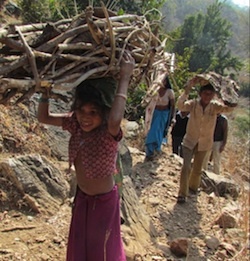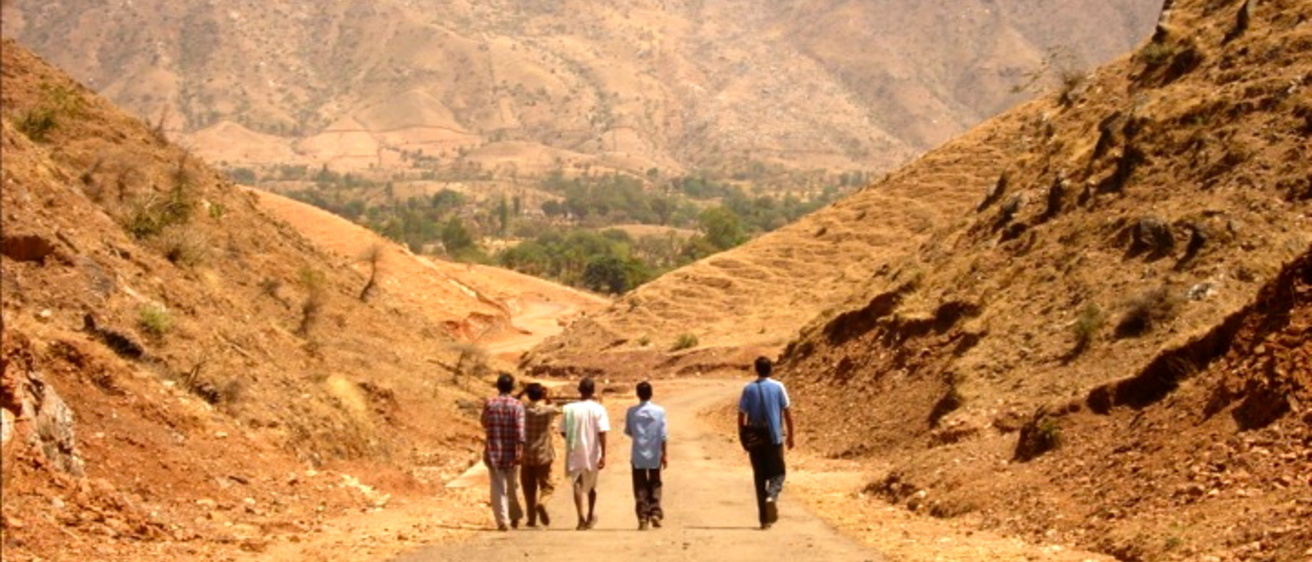H.S. Udaykumar (Mechanical Engineering, College of Engineering) had a chance coffee shop encounter with his friend and colleague, R. Rajagopal (Geography, CLAS), which became the first in a series of events that would dramatically change his life—down to what he eats and reads.
“I was at T-spoons, totally oblivious,” recalls Uday, “and Raj accosts me and announces, ‘You are going to India! There is a project that is dealing with deforestation that needs you.’” When Uday admitted to being confused by what mechanical engineering had to do with deforestation, Raj explained breezily: “You will go and find out.”
Since that conversation in 2010, Uday—who is a Spring 2012 Obermann Fellow-in-Residence—has traveled back to his native India numerous times, twice with the India Winterim program, becoming increasingly committed to the people and needs of the northwest region of Rajasthan. The once heavily forested and mountainous region is home to wolves, tigers, leopards, hyena, sloth bear, and people—indigenous people who have lived on the edges of the forest for centuries. Their livelihood depends on the forest but pressing energy needs are threatening to cut into their ecological base.
The Avarali hill range separates the forest from the Thar Desert, serving as a barrier to the encroaching sand. The desert is growing by thousands of acres every year. As the forest decreases not only in total area but also becomes patchier, so does the habitat for the animals living there, as well as the rainfall in the area, which has already decreased noticeably. Groundwater is disappearing as well, making growing food increasingly difficult.

There are several factors behind the deforestation. The first is the need for firewood for cooking. Women and children from the surrounding tribes spend up to 10 hours a day walking to existing stands of trees, cutting down wood—up to 70 pounds a day, and carrying it home to cook. Another is the increased demand for dairy products in India (milk production has more than doubled since 1990 and is now at about 122 million tons per year – more than the U.S.) and for goat meat in nearby countries. Herds of dairy cows and goats graze in the forest, eating and destroying the undergrowth and tree roots. Hill by hill is being erased, turned from green to brown.
“I used to think all I could do about global warming was to change my light bulbs,” says Uday, whose research includes working with the U.S. Air Force to study material responses at very high speeds and modeling blood flow through heart valves via a National Institutes of Health grant. Now, in addition to this highly theoretical research, Uday is overseeing a group of nearly two-dozen University of Iowa students who are developing a solar cooker that can be used during non-daylight hours, so that cooking can be done first thing in the morning and again in the evening, rather than midday when the sun is at its hottest.
“Our goal is low technology with a high impact,” says Uday, who is partnered, along with several other universities, with the NGO Climate Healers on the project. The challenge comes in storing the energy while using low-cost materials and tools that can found in the area. “They have to own it and build it themselves,” he says of the people for whom they’re developing the cooker.
His experiences in India have impacted more than his work. Since his first trip to Rajasthan, Uday has become vegan. The vegan diet, which eliminates all animal products including dairy, is the most earth-friendly diet for humans. “I came home and really examined my own world,” he says. “We’re asking people in parts of the world who are already living on a very thin razor’s edge to change their ways, but most of us are sitting here living with a huge [carbon] footprint. We need to look at what we can do.”
In addition to developing the cooker, Uday is trying to establish a group of scholars and artists to address issues of deforestation from an interdisciplinary and collaborative approach. The mechanical engineer is the first to admit that in the past he had little patience for or interest in other areas of the academy. Now, however, he reads Buddhist texts on the spiritual impact of the environment and historical accounts of cultures that collapsed due to deforestation. He believes that writers, artists, and filmmakers will contribute as much to saving the earth as scientists and engineers.
“It’s all interrelated,” he says of his newly adopted interdisciplinary approach. “I firmly believe that if we don’t connect the dots, we won’t survive. And there is no one repository of knowledge that will help us; we have to combine what we know.”
